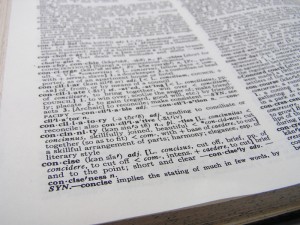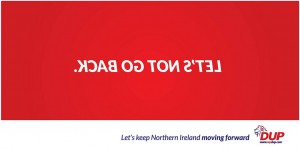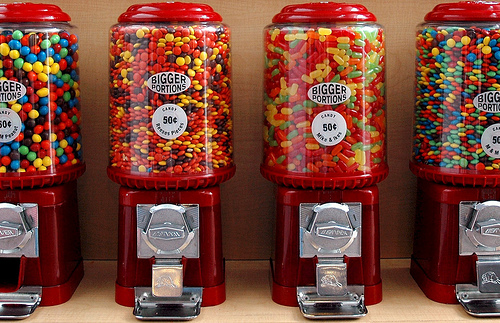Writing Concise Copy: How to Say a Lot with a Little

Remember, you’re writing for marketing materials…not a dictionary. Make your words informative, but also keep them concise.
Being a good writer isn’t just about conveying as much information as possible–it’s about making every word count. A truly articulate writer can use concise business writing to pack a wealth of meaning into only a few words.
It doesn’t matter if you’re renowned for your verbose, eloquent style-at some point you’re going to be forced to work within a small amount of space. Whether you’re sending out direct mailers or handing out promotional mugs at a corporate event, there are going to be situations where you’re hit with space limitations.
Instead of thinking of conciseness as a limitation or obstacle, try thinking of it as a way to help you practice writing effectively.
Set achievable goals
The less space you have to work with, the harder it can be to make a sale from your copy alone–especially if your product is expensive, unfamiliar or unique. Instead, it’s better to have an achievable goal in mind.
Think about those classified ads you see in the paper. The goal of these ads isn’t necessarily to get you to buy a car (though that is the ideal end result). They’re first designed to get you to call a number and contact the seller; at that point, they can provide you with more information and perhaps schedule a test drive, all leading up to a potential purchase. The initial call to action (“call this phone number”) requires much less copy than a complete sales pitch.
Most print media should focus on trying to get your audience to take an “initial” action with less commitment: call a salesperson, visit a website or set up an appointment for a consultation. Your space is limited, and focusing on one goal at a time is a much more efficient strategy.
Have a clear message
Now that you have a goal to work towards, you should make sure that the overall message of your copy is going to help you towards that goal. You don’t have the extra space to branch off to other topics, so your copy has to be streamlined and focused on the goal at hand.
Your copy should include a call to action–something that tells the reader what he’s supposed to do with the information he just received. These are clear, direct statements such as “Call us to get up to $4000 more on your next tax return.” This statement tells the reader what to do and what the benefit of doing so would be.

When space is limited, an interesting headline is necessary to grab the attention of your audience. In this example, the headline is backwards which reinforces the message and lets it stand out above the crowd.
Photo Credit: DUP Photos
Let your headlines do the talking
Every good copywriter knows how important headlines are, but when you’re working in a small space, they become absolutely crucial. The headlines are the first thing the reader will see and will either grab his attention or lose him for good. Your headlines should be informative, snappy and intriguing.
Generic headlines will ensure your copy goes unnoticed. A bad example is something like “We’ve Got a Great Deal for You!” The headline says nothing about what you’re offering or how it’s going to benefit the reader. Instead, you want a headline that explains what that deal is, such as “Save up to $200 a Month on Car Insurance.”
With limited space, your headlines have more weight–literally. They take up more room on the page then the rest of your text, so you have to make that sacrifice of space worthwhile by delivering the most information you can. Short, concise headlines are best because they leave you with more space and make your copy easier to scan.
White space is your friend
Often the temptation for writers is to fill up any “empty space” on the page. But including whitespace is actually very important for print marketing–it implies elegance and simplicity, and allows you to place emphasis on certain elements of the page.
You should make the most out of the space you’re given, but that doesn’t mean writing redundant phrases just to take up space. Eliminating wordiness and choosing your terms carefully help you to say a lot by saying a little. Make sure your reader knows exactly what you’re offering, how it would benefit them, why they need it and what they need to do to next.
Only include visual elements when they support your writing; you can worry about images if you have room left over after hitting all of the points you want to get across.

When you’re working in a smaller space, use sentence fragments and lists to include more information without taking up more space.
Photo Credit: Taylor Sloan
Chop up your copy
Let go of your traditional sentence and paragraph structure when working with condensed space. Chop up your copy into smaller chunks–if you can concisely deliver the same information as a list instead of a full paragraph, you’ll save on space.
Sentence fragments are okay when space is limited and can actually be preferable because they deliver information quickly. On the other hand, avoid run-on sentences–your sentences should be as concise as possible. You can use the Paramedic Method on your longer sentences to help eliminate wordiness. Paragraphs should also be short and range between one to three sentences each.
Give away the ending
A trick to creating clear, concise writing is to give away the ending. Show the customer exactly what they can gain from your product or service before ever introducing who you are or what the product even is. The benefit to the customer might be more money in his pocket, a solution to his problem or even just a treat to make him feel better.
For example, instead of a headline like “Open Up a New Membership with XYZ Fitness,” use something like “Get Healthy, Live Longer, Join XYZ Fitness!” The second headline tells the reader exactly what the end result of signing up for a membership would be in a way that invokes an emotional response, then follows up by demonstrating how the reader can achieve that result.
Using this method makes it easier to get the attention of the exact audience you’re trying to reach. In the case of XYZ Fitness, the second headline would appeal to those people looking to become healthier, so right away they know the message is speaking to them. Those not looking to get fit or those who already have gym memberships are less likely to respond to the headline, but they’re also less likely to start a new gym membership too.
Use numbers
Using numbers in copywriting is an excellent way to keep its length to a minimum. For starters, using numerals (“71”) instead of spelling out the number as a word (“seventy-one”) helps to save on space and makes your writing easier to scan.
Numbered lists and headlines containing numbers can also give you a set framework to work within, making it easier to condense your information within a certain number of bullet points.
Conclusion
Think of writing concisely as a conversation starter. You want to get your customer intrigued about your brand enough to follow your call to action. The real sales work begins after the customer has done so.
Just be sure to find a way to track any incoming calls, website visits or sales as a result of your business writing. If you find you’re not getting a response, then analyze your message and your call to action to make sure they’re both crystal clear.
Posted in Copywriting
Don`t neglect your friends, share this right away.





Leave a Reply